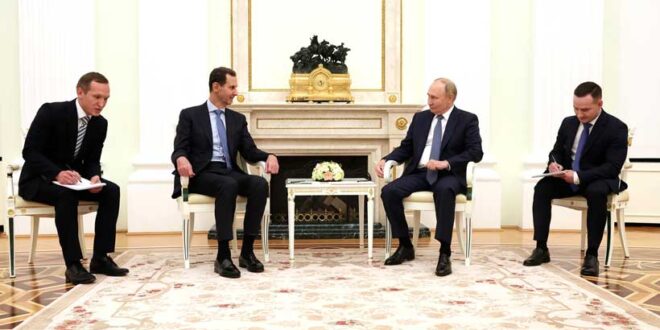On December 8, as opposition forces breached Damascus, Syria’s longest-serving dictator sought political asylum in Russia. This marked a historic global shift from dictatorship to rebellion, culminating in the fall of over 50 years of Assad family. By the end of December 8, Syria had fallen to opposition forces, signaling the complete collapse of the Assad regime. The development is poised to reshape the power dynamics in the Middle East, with significant implications, especially particularly for Russia. The fall of Assad may exacerbate regional tensions and emergence of new political factions, further destabilizing the region.
The fall of Assad is likely to alter the alliances within the region, particularly among key actors such as Iran, Turkey, and Russia. Many scholars view this victory for Western-backed opposition forces, potentially changing the balance of power among global players, including Russia, the USA, and other regional powers in the Middle East. Assad’s fall can be analyzed through multiple dimensions, encompassing external and internal factors that laid down the groundwork for the huge and historic uprising. The fall of the Assad regime marks a significant turning point in the Middle Eastern geopolitics, with far-reaching implications for Russia’s foreign policy.
One of the major external factors contributing to the fall of Bashar al-Assad is wanning support from key allies, particularly Russia and Iran. Initially, Russia played a very important role by striking and giving military support to the Assad regime. However, Russia’s priorities have been shifted after delving into the Ukraine war. Moscow’s resources were increasingly diverted to the Eastern European conflict, limiting its military to provide sustained military and political assistance to Assad. Russia spends too much on military and defense to oppose the USA’s intervention and indirect fight against Russia. The financial and military strain of opposing US interventions and maintaining its position in a neo-Cold War context further constrained Russia’s ability to support Assad.
Similarly, Iran’s isolation in the contemporary world has also negatively affected Syria as her closest ally. Iran, despite its long-standing relations with the Assad regime, faces its own internal and external challenges imposed by Western countries, which reduced its capacity to act in Syria. Geopolitically, Syria has also faced growing isolation, which has further weakened the Assad regime in Syria. It has faced sanctions and economic pressure from Western countries. Another external key factor in Assad’s downfall has been the backing of opposition by foreign powers. Syria, home to proxy war, has experienced multiple factions fighting one another, which is a very complex phenomenon. Countries like Qatar, Turkey, and the United States have provided logistical and military help to forces.
Internally, various factors have shaped Assad’s fate in Syria, including economic degradation, corruption, and fragile governance. The fragility of the Syrian state was further exacerbated by the economic degradation caused by increasing international sanctions. Transparency International,” the most respected index of perceived corruption, ranked the Syrian state as the second worst in the Middle East and North Africa, after Iraq. Similarly, the United Nations Development Program, in June 2005, found that more than 30% percent of Syrians (more than five million) lived in poverty, with 11% (more than 2 million) living in extreme poverty.
Corruption at an elite level and fragile governance have played a pivotal role in firing heat against Assad’s regime. The state of the Syrian military on the frontlines of Idlib and Aleppo was a reflection of the regime’s overall ineptitude, cruelty, and corruption, with soldiers and officers preoccupied with finding ways to survive or enrich themselves – such as operating profitable smuggling routes, shakedowns, and theft – rather than fighting. The Assad regime has followed a pattern of “patronage and pruning” to maintain elite support and public discontent. This involves allowing elites to exploit public power for private gain while periodically pruning the regime to maintain stability.
In light of these factors, Russia faces significant challenges in preserving its influence over the region. While the loss of Assad’s regime is a major setback for Russia, Moscow is unable to abandon its interests in Syria entirely. Russia may focusing on retaining military presence, importantly at key bases in the Middle East, such as Khmeimim and Tartus, and forging new alliances with regional powers. Nevertheless, Russia will try to do everything to retain its power, if not maximum but minimum, ensuring that its position does not erode entirely.
After Assad’s fall, the Kremlin will likely adopt a “wait-and-see” policy, trying to understand how a new coalition will emerge in Syria. The Kremlin’s main goal will be to maintain a minimal level of influence in the region through a military presence, for instance, as its existing bases of Tartus and Khmeimim.
Despite all the challenges, Russia would be willing to offer a lot to the new coalition in Syria to retain its power as the priority for countering complete control of the Area by the United States of America. If Russia is pushed out entirely and they are unable to offset with basing elsewhere in the region, such a serious blow to Russia’s power would make Putin more rigid and determined for power dominance in both Syria and Ukraine.
 Geostrategic Media Political Commentary, Analysis, Security, Defense
Geostrategic Media Political Commentary, Analysis, Security, Defense





